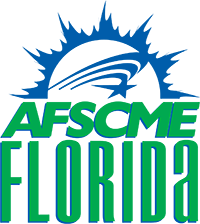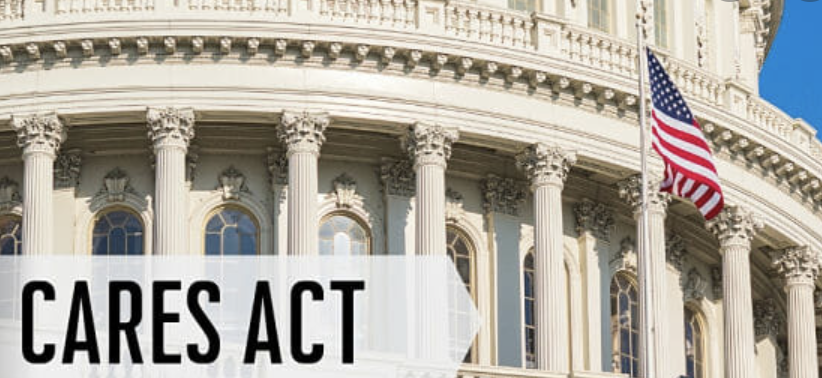The Coronavirus Aid, Relief, and Economic Security Act (H.R.748)
The Congress adopted the Coronavirus Aid, Relief, and Economic Security (CARES)Act on March 27, 2020.The adopted bill isan improvementupon the initial bill proposed by Senate Majority Leader Mitch McConnell (R-Ky.). Specifically,itprovides$150 billion to state and local governments to fundresponseto the COVID-19pandemic. This thirdinfusion of needed support to communities and Americans impacted by the health crisis and economic fallout from COVID-19is important,but Congress must still addressthe significant unmet needscreated byCOVID-19, especially fiscal issues that will soon confront governments at all levels as the economic effects of the pandemicarefully realized.
Among the additional needs Congress must address include:
- Significant increasesindirect federal support for states and localities straining under increased demands for public services and huge reductions in revenues.
- Flexibility in the use of those funds to mitigate the severe economic impact of the coronavirus responseon state and local government services.
- Addressing the shortage of personal protective equipment and medical supplies and the absence of an OSHA temporary emergency standard for infectious disease.
SUMMARY OF KEY PARTS OF THE BILL
Direct Grants to State and Local Governments:
- $150 billion for state, tribal, and local governments through a new Coronavirus Relief Fund. Thefund isadministered by the Secretary of Treasuryandsupportsincreasedand unbudgeted costs due to the pandemic.Unfortunately, the funds may not be used to address the effects of collapsing revenue due to the economic recession.
Education: Direct Grants and Student Loans:
- $30.75 billion for education overall.
- Of those funds, $13.5 billion go to states for K-12 schools and $14.25 billion to higher education institutions.
- $3 billion for governors to allocate at their discretion to areas in greatest need.
- Current federal student loanborrowers get help with their student debt burden by suspending payments for six months with no penalties and with no loss of time counted toward Public Service Loan Forgiveness (PSLF).
Head Start and Child Care:
- $750 million for Head Start and $3.5 billion for the Child Care and Development Block Grant (CCDBG).
- These funds can cover costs, salaries and wages for providers and copays for parents.
- Mobilizes emergency child care for workers deemed “essential to the coronavirus response by public officials” and strips income eligibility requirements to ensure that health sectorworkers, emergency responders, sanitation workers and others have access to child care.
- Funds are also available to all child care providers, even if they donot serve children receiving subsidies, for the purposes of cleaning, sanitation and other activities necessary to maintain or resume programs.
- States and municipalities are eligible to participate in loan programs capitalized by $454 billion. Under criteria developed by the Treasury Department and applied by the Federal Reserve Bank, governments and businesses may receive direct loans, the Fed may purchase bondsdirectly from issuers orin the secondary marketand collateralized loans will beavailable. The $454 billion allocation will be leveraged to provide as much as $4.5 trillion in loans to support liquidity in the public and private sectors. Details on how the various programs under the law will operate shouldbe available very soon.
- Directs the Treasury Secretary to “endeavor to implement a program”thatprovides liquidity to the financial system to support lending to states and municipalities.It is unclear how this program will operate and it may be redundant with the program described above.
The government will send direct payments of $1,200 per adult and $500 per child to Americans with these amounts starting to phase out atbased on adjustment gross income of$75,000 (individual filer), $112,500 (head of household) and $150,000 (joint filers). The payments will be fully phased out at $99,000 (individual), $136,500 (head of household)and $198,000 (joint). AFSCME urges Treasury to sendthesepayments to Americans quickly, but the timing for sending the checks is not clear.
Unemployment Assistance:
- Establishesa new Pandemic Unemployment Assistance (PUA) program that provides unemployment insurance benefits to workers thatare not eligible for regular compensation or benefits under state or federal lawsuch asself-employed, independentcontractors and gig workers.The federal government willreimburse or advance paymentto statesfor administering this new program.The duration of benefits is limited to 39 weeks, through Dec. 31, 2020.
- Creates a new Federal Pandemic Unemployment Compensation (PUC) program to provide temporaryunemployment compensation of $600 a week from the federal government. This would supplementexisting state or federal benefits for allworkerseligible for benefitsand cover workers receiving benefits under the new PUA. These additional benefits can last up tofour months through July 31, 2020.Includesanemergency state staffing flexibility provision that allows states to temporarily waive merit-staffing requirementsfor UI administrationthrough Dec 31, 2020 to meet the unprecedented rise in unemployment benefit claims. The bill lacks additional funding for states to administer UI benefits beyond the $1 billion in the Families First COVID-19 Response Act.
- These funds will help address critical gaps in personal protective equipment for health care workers, testing supplies, increased workforce and training, and an increase of the Strategic National Stockpile.
- The bill fails to direct the Occupational Safety and Health Administration to issue a temporary emergency standard on COVID-19 infectious disease.
- Medicare Part D plans will be required to allow fills and refills for covered prescription drugs for up to 3 months
- When there isasafeandeffectivevaccineforCOVID-19, Medicare beneficiarieswillbeabletogetitthroughtheirPartBcoverageatnocost.
- The bill also increases telehealthopportunities so beneficiaries can visit a doctor without having to leave their home.
- Medicaid DSH cuts to safety net hospitals which were to be implemented in late May are blocked through Nov.30, 2020.The bill does not increase federal support to stateMedicaid programs.The previous bill increased FMAP by 6.2%.
- Funds for Certified Community Behavioral Health Clinics areextended through Nov.30, 2020.Community Health Clinics received an additional $1.3 billion. This is significant for caring for undocumented and uninsured individuals.
- $850 million for the Byrne-Justice Assistance Grant Program (Byrne-JAG), which will allow state and local police departments and jails to purchase needed personal protective equipment and other medical items. It can also support overtime for officers on the front lines and other pandemic related costs.
- Requires health plans to cover COVID-19 related qualifying services and treatmentswith no plan participant co-payments.
FEMA Disaster Relief Fund:
- $45 billion for Federal Emergency Management AgencyDisaster ReliefFundto provide for immediate needs of state, local, tribal, and territorial governments to protect citizens and help themrecoverfrom COVID-19.Reimbursable activitiesincludemedical response, personal protective equipment, National Guard deployment, coordination of logistics, safety measures, and community services nationwide.
- $1 billion for Defense Production Act (DPA) account topurchasepersonal protective equipment, ventilators, and other urgently needed medical supplies,andbillions ofdollars more for federal, state, and local health agencies to purchase such equipment.However, DPA-funded purchases are subject to the President invokinghis full authority under the DPAto federalize production of need equipment and supplies.President Trump has so far refused to invoke that authority.
- Provides $25 billion inaid to our nation’s transit systems.Provides $10 billionin grants to help U.S. airports.
- $685 million for the Public Housing Operating Fund, which will help Public Housing Authorities (PHAs) operate and maintain their public housing units. $5 billion to fund the Community Development Block Grant (CDBG) program, which is a direct flexible grant that participating jurisdictions can use to fund their priorities.
- Bans stock buybacks for the term of the federal government assistance to corporations plus 1 year on any company receiving a government loan fromthe bill.Establishesrobust worker protections attached to all federal loans for businesses.In an important precedent, medium sized businesses (500 to 10,000 workers) who receive loans must commit to organizing neutrality for the life of the loan and cannot abrogate collective bargaining agreements.

